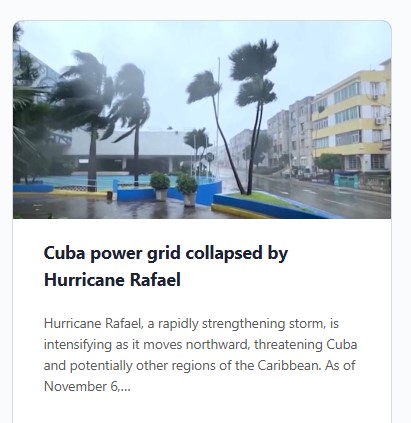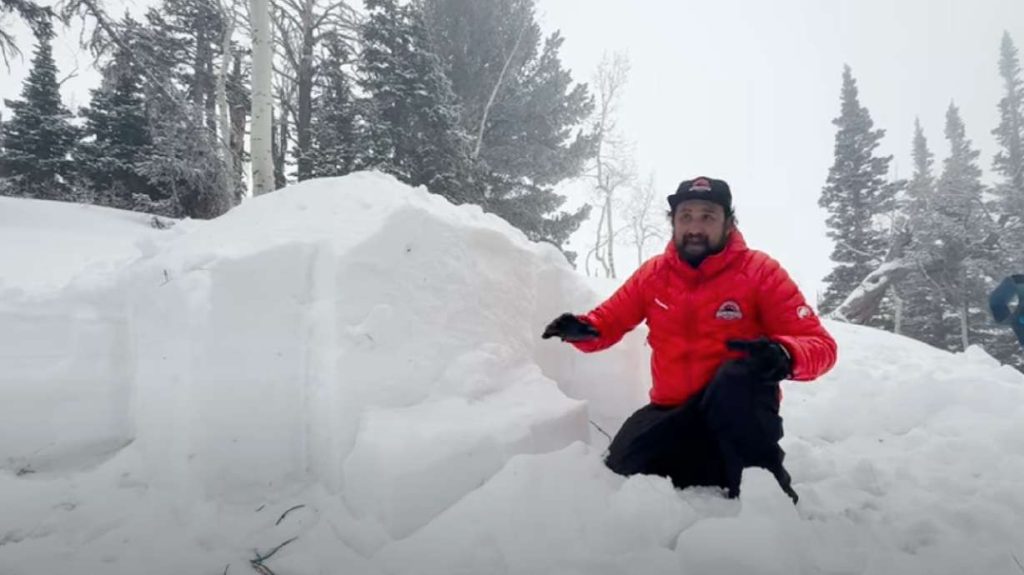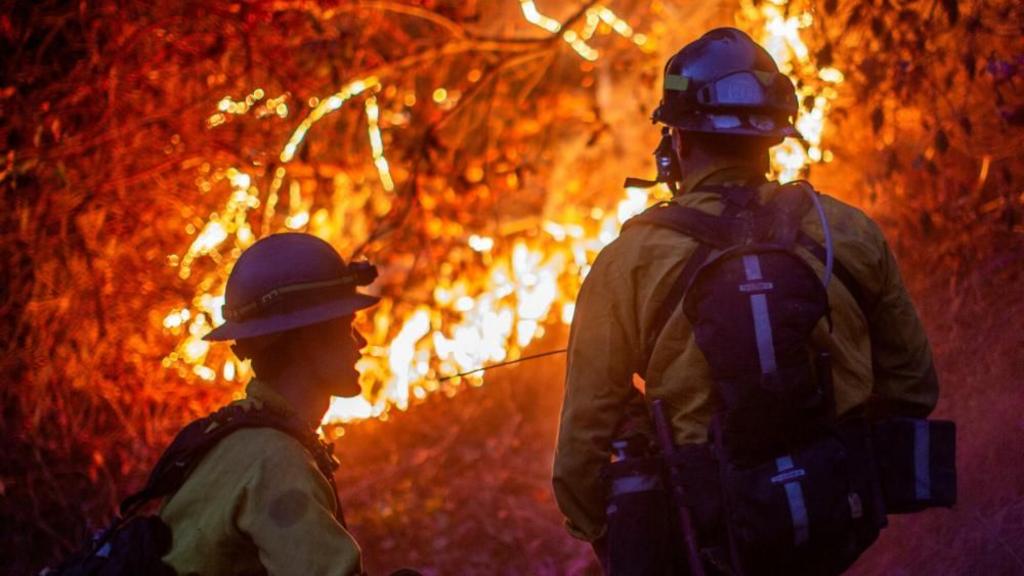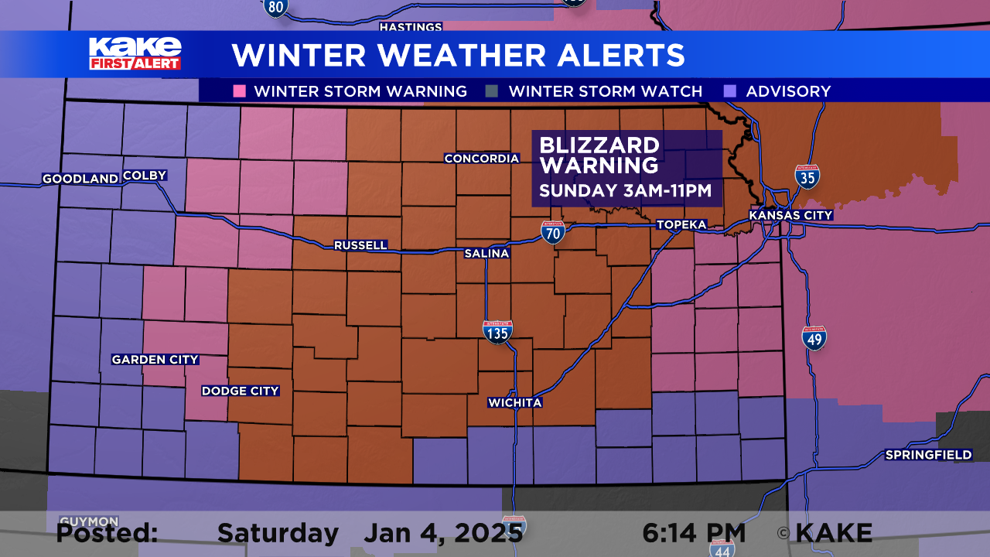Cuba power grid collapsed by Hurricane Rafael
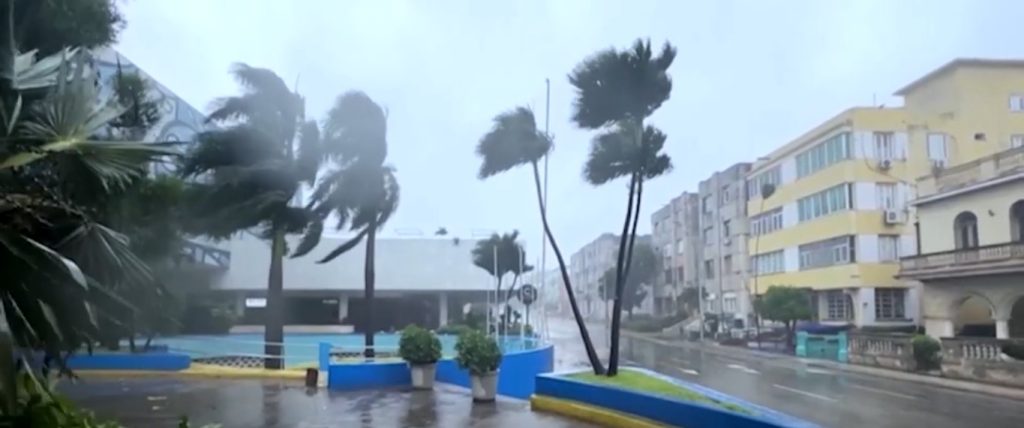
Hurricane Rafael, a rapidly strengthening storm, is intensifying as it moves northward, threatening Cuba and potentially other regions of the Caribbean. As of November 6, 2024, the U.S. National Hurricane Center (NHC) issued warnings, alerting residents and authorities to prepare for potentially severe impacts from the storm, which is forecast to gain strength in the coming days.
Rafael, which was upgraded to a Category 1 hurricane on Tuesday, is expected to continue strengthening as it moves over the warm waters of the Caribbean. The storm is currently churning about 250 miles south of Cuba’s western tip, with maximum sustained winds of 75 mph (120 km/h). The NHC has warned that Rafael could become a stronger Category 2 hurricane within the next 24 hours. Meteorologists are closely monitoring its path, as its rapid intensification could lead to more dangerous conditions for coastal areas, especially in Cuba.
Immediate Threats to Cuba
Cuba, with its proximity to the storm, is facing a high level of alert. The storm’s projected path suggests that Rafael could bring heavy rainfall, strong winds, and dangerous storm surges to Cuba’s western region, particularly in areas like Havana and Pinar del Río, which are no strangers to tropical storms. Authorities in Cuba have already begun implementing preparatory measures, including evacuation plans for vulnerable coastal areas and the closure of schools and businesses in the path of the storm.
Cuban officials have urged citizens to secure their homes and take safety precautions, particularly in flood-prone regions. The government has also prepared emergency teams to respond quickly in the event of flooding or infrastructure damage.
As Rafael moves closer to the island, conditions are expected to deteriorate, with tropical storm force winds expected to reach Cuba by Wednesday evening.
Broader Caribbean Impact
While Cuba remains the most immediate concern, the storm’s potential to affect other Caribbean nations is also a growing worry. The storm’s trajectory could bring it near or over other islands in the Caribbean Sea, including Jamaica and the Cayman Islands, which may also experience heavy rains, wind gusts, and rough seas.
The NHC has warned these areas to monitor Rafael closely, as hurricanes of this nature can change direction or intensity unexpectedly.
In addition to the direct impacts on land, the storm’s swells could generate dangerous surf conditions, rip currents, and coastal flooding throughout the region, particularly along the northwestern coasts of Cuba, the Bahamas, and parts of Florida. Tourists and locals have been advised to stay updated with the latest weather reports and take extra care when navigating coastal areas.
U.S. Mainland Implications
As the storm moves farther north, there remains uncertainty about its potential to impact the U.S. mainland. While current forecasts suggest that Rafael will not make landfall in the United States, it could still influence weather patterns along the southeastern coast, particularly Florida. The storm could bring unsettled weather, including rain and winds, to areas already affected by seasonal storms.
The NHC is also monitoring the storm’s trajectory to determine if it could move closer to the southeastern U.S. later in the week. While the immediate focus remains on Cuba, storm experts warn that the hurricane’s path is unpredictable and could shift, requiring continued vigilance.
Intensity and Forecast
Meteorologists attribute Rafael’s rapid strengthening to favorable conditions in the Caribbean, including warm sea surface temperatures and low wind shear. As the storm tracks northward, it is expected to continue intensifying before potentially weakening once it moves over cooler waters or encounters unfavorable conditions.
The NHC is advising residents in the affected areas to heed warnings from local authorities and to prepare for severe weather. As of the latest update, hurricane warnings and watches are in effect for parts of Cuba and surrounding areas, with evacuations likely to follow in the coming hours.
Hurricane Rafael is shaping up to be a significant storm, and while it is still developing, its potential to cause damage is growing. As the storm strengthens, the focus is on ensuring that communities in the Caribbean, particularly Cuba, are prepared for what could be a powerful hurricane.
With additional monitoring and safety measures in place, officials are urging residents to stay informed and to follow evacuation orders if necessary. The coming days will be critical in assessing the storm’s impact and ensuring that those in its path are as prepared as possible.
Picture News
